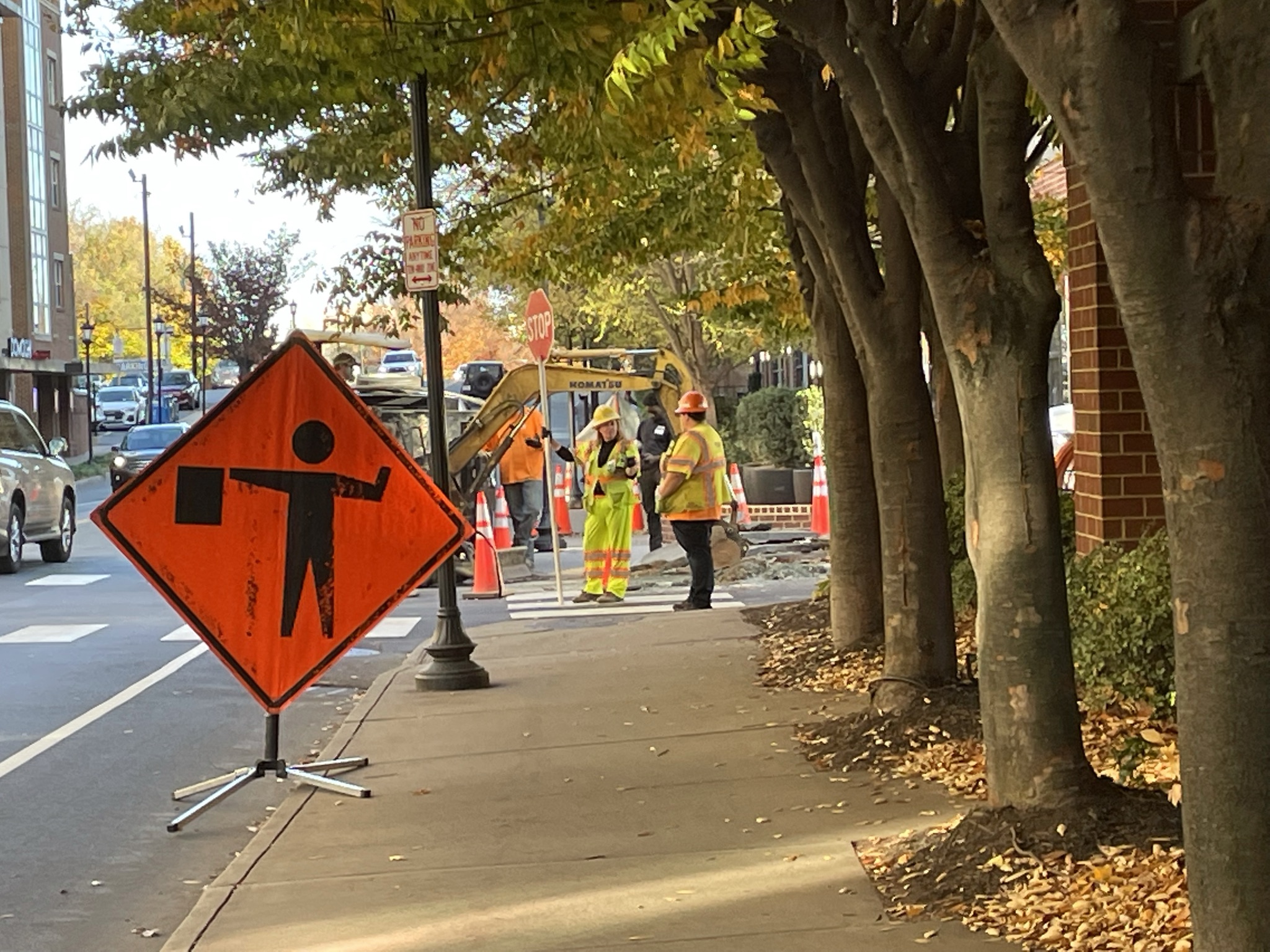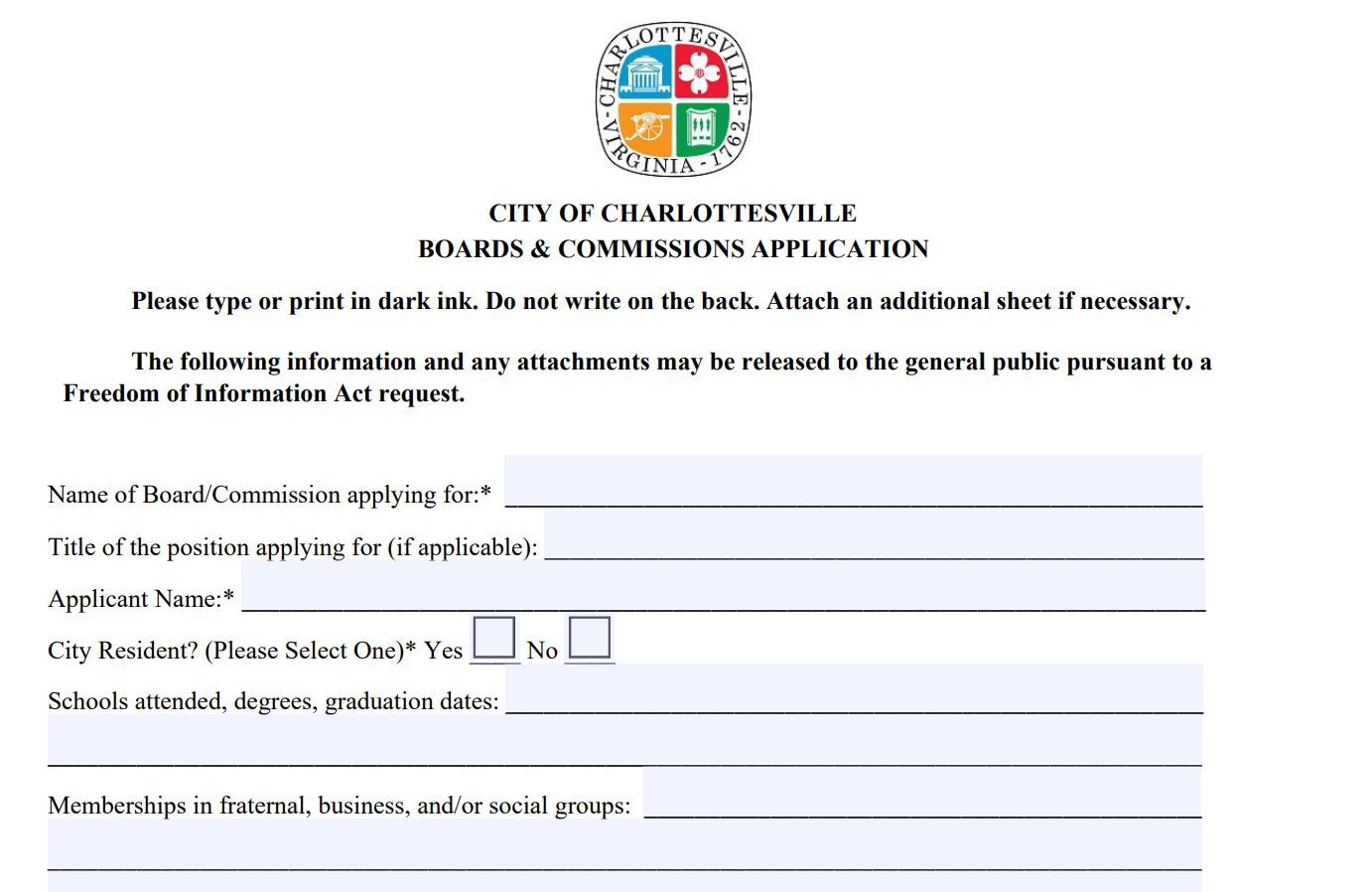Second of three articles from the September 27, 2022 City Council and Planning Commission
Charlottesville City Council adopted an Affordable Housing Plan in March 2021 and a Comprehensive Plan last November. The zoning is being rewritten to make it easier to build residential units with more density across the entire city. That can take many forms, such as eliminating the role elected bodies play in making land use decisions, and eliminating or reducing requirements. (review meeting materials for the September 27, 2022 meeting)
On a broad level, the Commission and the Council were asked to give feedback on specific questions. Let’s get right into this one with the second of three questions, asked by Lee Einsweiler of CODE Studio. CODE Studio is a subcontractor hired as part of the Cville Plans Together process.
“So, the second question is really about lot splits,” Einsweiler said.
Einsweiler wanted to know the officials’ thoughts on a new concept that would allow for smaller property subdivisions.
“We have proposed an idea that is called a sublot which basically says there is a zoning lot that is allocated rights and has obligations as a whole, but there could be a lot for sale which is a smaller piece of that,” Einsweiler said. “So if you had the main house and three new units, you could actually have four sublots. There would still only be one lot.”
These units might technically be cheaper due to lower land costs and smaller footprints.

Einsweiler said another alternative might be to eliminate minimum lot sizes entirely with subdivisions but that would require other adjustments as well.
“So right now, subdivision requires street frontage, it requires a certain width, and those are there for a very set of reasons which is about access and about fire safety,” Einsweiler said.
Einsweiller said homes need to be within 150 feet of a fire truck under fire code.
Another question is whether different neighborhoods should be treated differently, or if there should be one uniform set of rules.
“In which case we’d only have to draft one [zoning] district so you can make my job very easy but the challenge in talking to the community a little harder,” Einsweiler said.
Planning Commissioner Hosea Mitchell said he supported adding more flexibility by reducing lot sizes.
“I do believe that a more aggressive reduction in lot sizes is good and splitting them is good,” Mitchell said. “I am quite piqued by the sublot concept and frankly I think there are places where the elimination of lot sizes makes sense.”
Commissioner Phil d’Oronzio said he was in favor of reducing minimum lot sizes as well as elimination of sidewalk requirements. This would help with financing properties.
“That unlocks an enormous amount of potential in a couple of things,” d’Oronzio said. “One, housing under fourplex models and how those are financed. We can offload some city money into private hands because for 3.5 percent you can do a four unit property. Secondly if you configure them on a sublot that way and you decide that the common walls at a later date, you have four units that you can generate as four rentals.”
With regards to the fire department, d’Oronzio said their modeling for access issues are dated on old designs.
Commissioner Karim Habbab asked how affordability would be tracked if there many sub-lots. Einsweiler said further work would need to be done in that area if Council and the Planning Commission were to provide that direction.
“I’m not worried about tracking initial sub-lots because we’ve had some clients that have successfully done it,” Einsweiler said. “I am worried about tracking sub-lots of sub-lots of sub-lots if those begin to happen.”
Commissioner Liz Russell said she was intrigued by sub-lots if it leads to additional homeownership opportunities.
“If it’s true that one of the primary justifications behind minimum lot sizes historically was to maintain a minimum property value threshold for a city and we’re saying no, we actually want to offer neighborhoods to have a variety of property values, then that seems to be a good avenue to explore,” Russell said.
Planning Commissioner Carl Schwarz, a resident of the city’s 10th and Page neighborhood, said he wanted to make sure that the opportunity to subdivide could be accessible to people who own property but do not have the professional skills of a developer.
“I can imagine in my neighborhood people might want to take advantage of an accessory dwelling unit in their family but they can’t afford to build it, so it would be much easier for them to sell a chunk of their parcel and have someone else build on it,” Schwarz said. “I think that makes a lot of sense and does promote more homeownership.”
Schwarz said for much of this to work, there needs to be a conversation with the Charlottesville Fire Department about access issues.
“If the sub-lot thing doesn’t work with the Fire Department, then I would definitely recommend eliminating minimum lot sizes,” Schwarz said.
Commission Chair Lyle Solla-Yates also weighed in.
“I think smaller is better, consistent is better,” Solla-Yates said. “My home is about 2,000 [square feet] and I think it’s fantastic.”
City Councilor Sena Magill said she would be against different minimum lot sizes across the city because that could propagate racial redlining that historically kept people out of neighborhoods.
“If we do that and don’t make it a minimum lot size across the entire city we are not taking this opportunity to rectify that,” Magill said.
City Councilor Michael Payne said he would be open to eliminating minimum lot sizes.
“To me, the big picture goal would be allowing more of the type of development of small starter homes,” Payne said.
Charlottesville Mayor Lloyd Snook said he has done research into whether many of the goals of the Cville Plans Together could be thwarted by restrictive covenants, which are part of a property’s deed.
“In most places in the city, the single family covenant designation had a sunset provision of 25, 35 years down the road,” Snook said. “But a restrictive covenant that did not have a sunset provision said no subdivision.”
Snook wanted to know if this would prevent a legal obstacle. Einsweiler said that’s another piece of information that is not yet known.
“We’ve not asked yet whether sub-lots would be considered formally a subdivision and that may have to be litigated before we bring you the answer,” Einsweiler said.
Vice Mayor Juandiego Wade said he was supportive of sub-lots and eliminating setbacks on some parcels.
Before you go: The time to write and research of this article is covered by paid subscribers to Charlottesville Community Engagement. In fact, this particular installment comes from the October 26, 2022 edition of the program. To ensure this research can be sustained, please consider becoming a paid subscriber or contributing monthly through Patreon.











